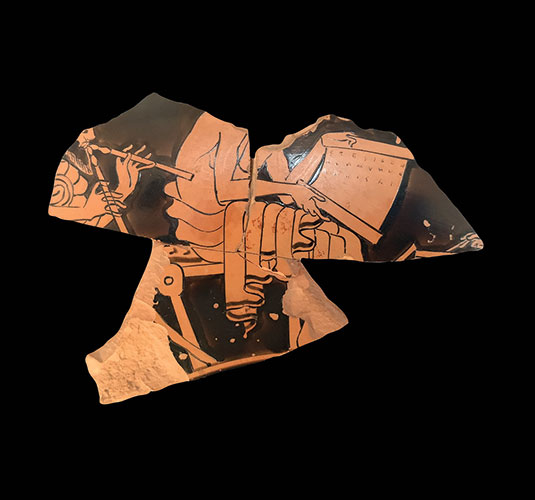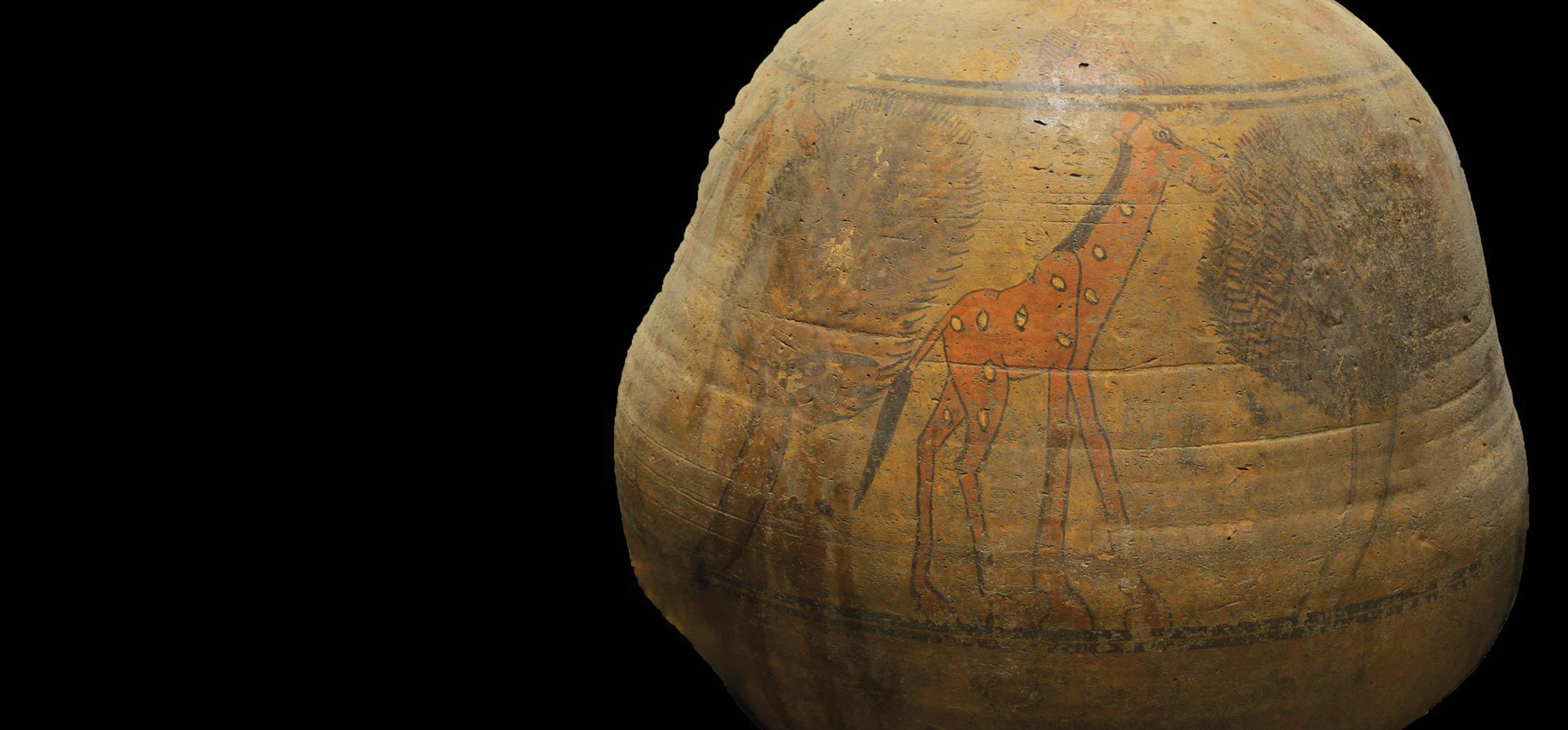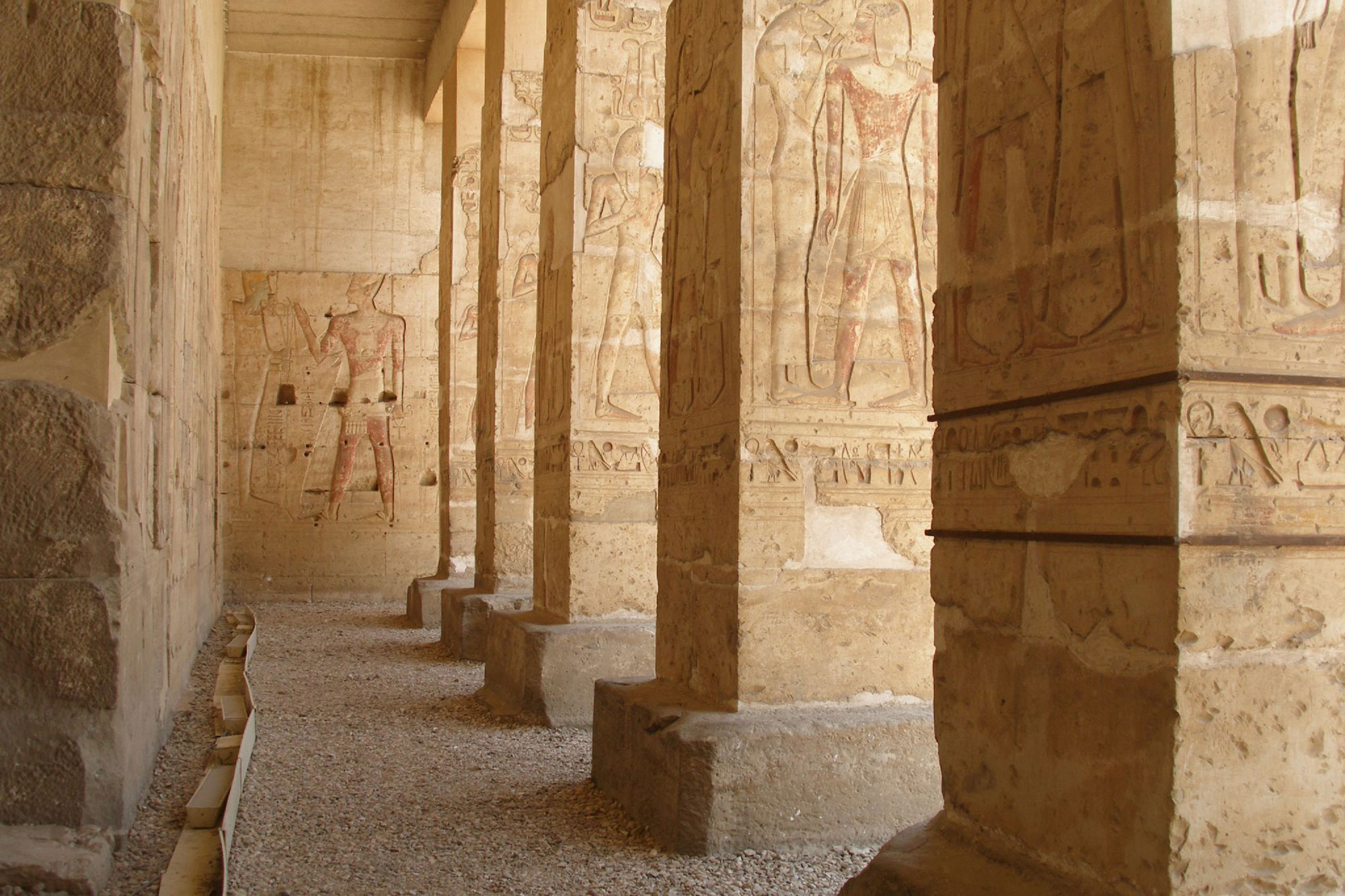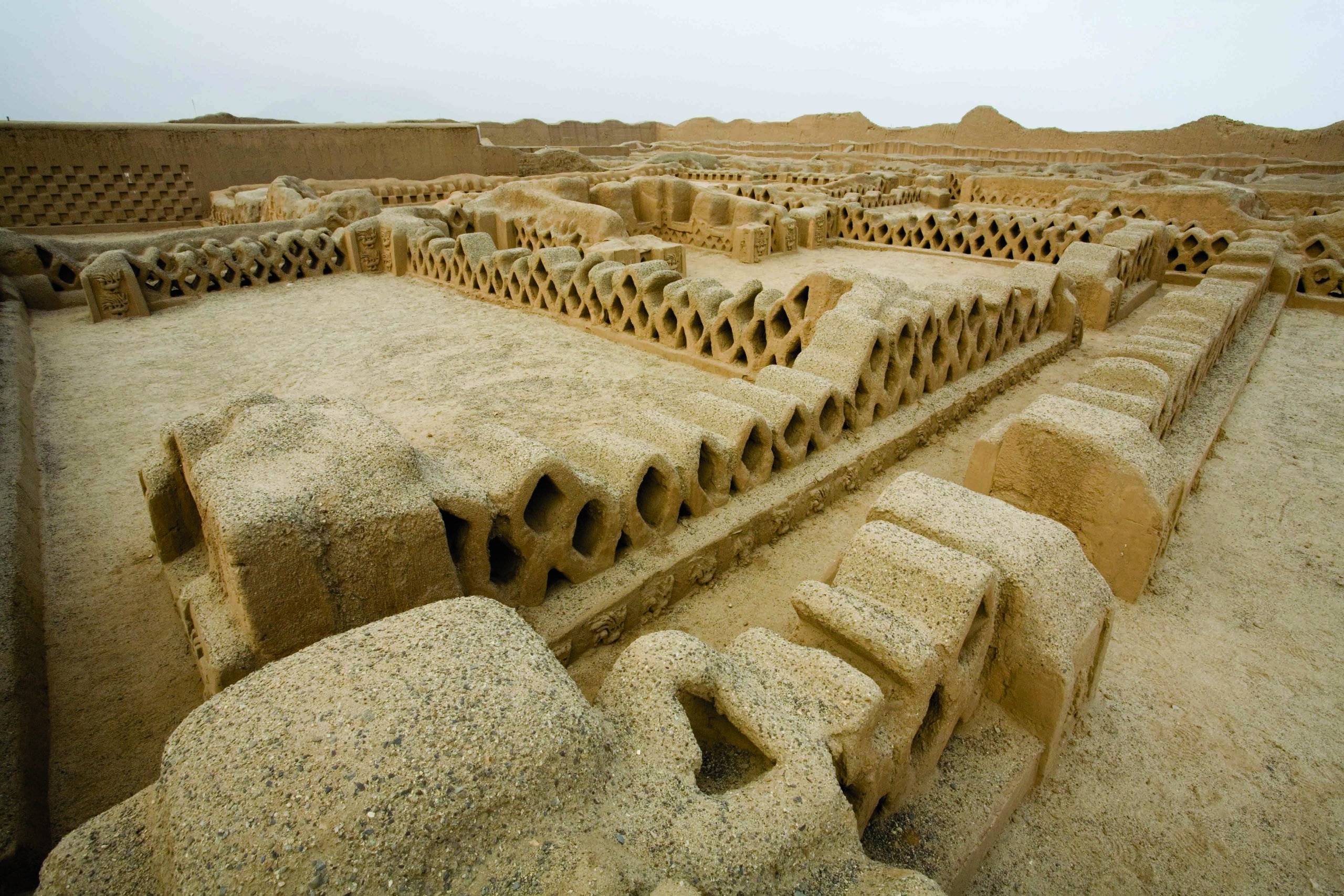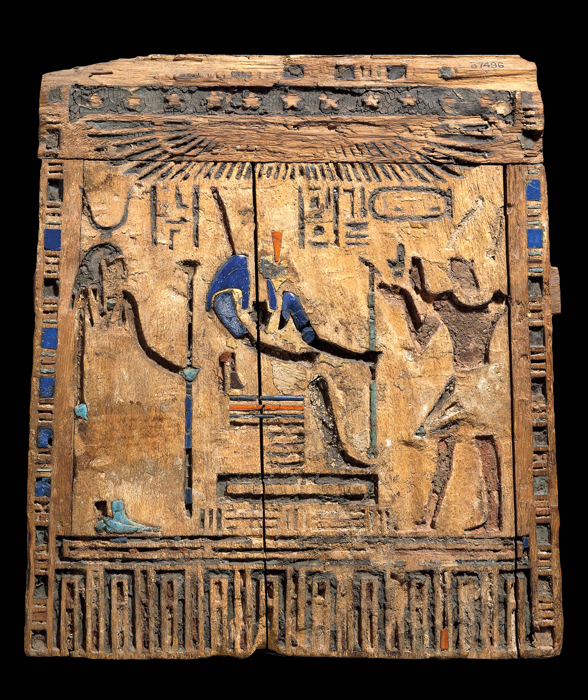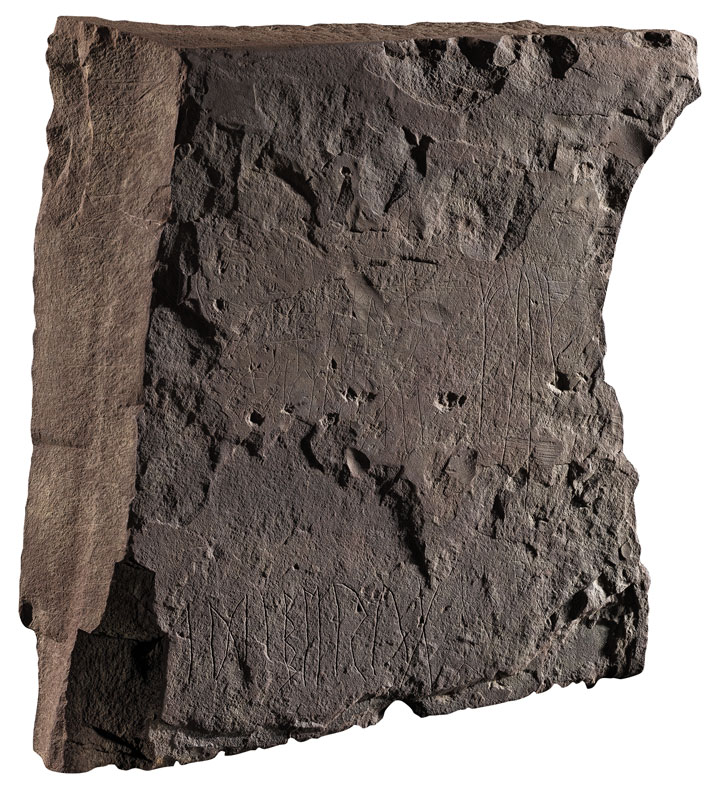
What is it?
Fragments of a kylix, or drinking cup
Culture
Greek
Date
480-470 B.C.
Material
Ceramic
Found
Naucratis, Egypt
Dimensions
1.5 to 3.5 inches across
A bored student passes notes. An exasperated teacher sighs. This scene would be familiar in any classroom around the world and across the ages. And while school scenes are uncommon in Greek vase painting, archaeologist Ollie Croker of the Museum of London believes that the painter of this drinking cup, an artist named Onesimos, clearly had an ancient version of these scholastic foes in mind. Croker says the scene of a disapproving teacher and a pupil surreptitiously examining a scroll is just one of several examples of humor in the cup’s imagery.

The scroll on the cup, which was found in Egypt, contains a phrase—“Muses who lead the chorus-leading hymn”—that cleverly slips in the name of the sixth-century B.C. poet Stesichorus. The text is written in a style called boustrophedon, or “as the ox plows,” in which alternating lines are written in opposite directions: left to right, then right to left. “Boustrophedon writing was very rarely used on Greek pottery,” Croker says, “and by the time this kylix was made, had fallen out of favor.” He believes that Onesimos’ anachronistic use of boustrophedon, which was popular during Stesichorus’ time, and the inclusion of the poet’s name recall a popular phrase—“You don’t know your Stesichorus.” Croker explains that this was a way of calling someone illiterate or not very clever, akin to “You haven’t read your Shakespeare.” “But, of course, you would have to be both literate and educated to get the joke,” he adds. An illiterate viewer would also have found humor on the vase, Croker suggests, in the pained visage of the teacher facing forward in an appeal for sympathy. It’s as if he wants you to know that his too-clever student’s joke is the last straw.



